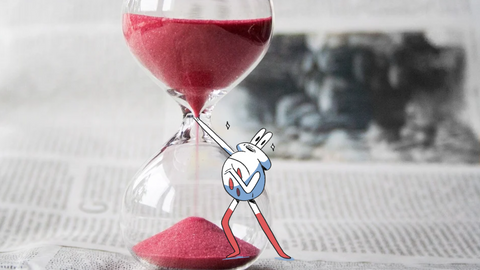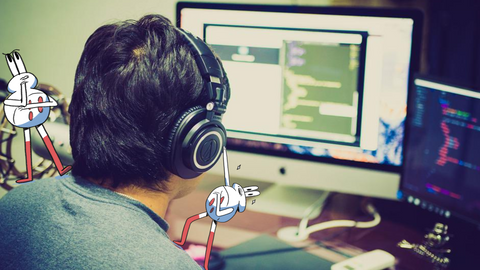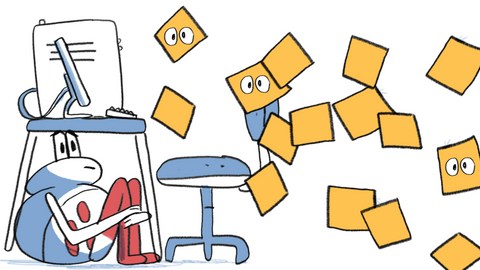Did you read the title of this article and think “Yes, yes - I know that multitasking is bad for productivity.”?
Or maybe you’re reading this while doing something else...
In a recent article, we talked about how damaging context switching is. If you missed it, a short summary is that switching your focus away from the task at hand and then back again causes it to take you twice as long to complete the task, and doubles the number of errors when you do.
Multitasking is not a productivity hack.
But that’s not the myth.
The myth is that multitasking is all bad.
In fact, you can game the system. We’ll show you how. And we’ll help you stop the bad kind of multitasking altogether.
What is multitasking?
‘Multitasking’ was first coined in 1965 and was used to describe a computer simultaneously carrying out two or more tasks. Since then, the term has been extended to include people trying to do the same thing.
You’ve seen them at it: trying to hold a phone conversation while also clicking around in a spreadsheet. Sending emails while in a meeting. Reading a report while in a workshop. Not only is it bad for performance, it’s often plain rude.
Is multitasking possible?
There are many misconceptions about multitasking in popular culture. For example - and despite popular belief - women are not better at multitasking than men. In fact, men may be slightly better than women at carrying out concurrent tasks, although their performance is still worse than if they just did the tasks separately.
That itself suggests that while possible, multitasking is never optimal. And yet, so many people pride themselves on their ability to multitask. Job adverts often call for multitaskers!
Could that be because hiring managers have learned the true ‘myth of multitasking’?
We doubt it.
But you’re about to!
What is the myth of multitasking?
The true myth of multitasking is that it’s a good for nothing, low-down dirty trick and it has no place in a productive work environment.
Because there is one time that multitasking improves performance… When people believe they are multitasking.
Take this study: two groups of participants were asked to complete a task: transcribe the narration of a wildlife documentary. One group was told they were working on that single task. Another group was told they would need to multitask, as they were also supposed to be learning the material that was being discussed by the narrator, too.
Unsurprisingly, the second group performed better on a short quiz about the topic after the exercise.
But that’s not all.
This group who divided their attention between transcribing and learning also transcribed more words, and more accurately. They outperformed the people who only had to focus on the transcription.
A total of 32 similar experiments all showed the same results. If people believe they are multitasking, they are more focussed and perform better than if they believe they are completing a single, simple task.
How to multitask effectively
This research leads to some simple principles you can apply to ensure you are working effectively.
- If you must complete two tasks at the same time, ensure they are complementary in terms of the demands they place on your attention. Transcribing and learning, for example, or proofreading and formatting a document.
- When you go into such tasks, acknowledge that you are multitasking. Hell, tell others, too! Get a little flag that says ‘multitasking’ and stick it to the top of your screen.
That means we still need to steer clear of context switching, interruptions and combining complex tasks that require different types of attention. For example, writing code while checking emails, or reading a report while you’re in a meeting.
And if you don’t have any tasks that match the requirements? Well, don’t try to multitask.
How to stop multitasking
There are a few simple steps that will help you overcome your multitasking habit.
- Get buy-in from your boss and the rest of the team. It’s easier to avoid distractions when you’re all on the same page.
- Record how you spend your time for a few days and notice all the times you try to multitask.
- List all the tasks you’re most likely to try to do at the same time, then look for opportunities to apply the principles in the previous section; which tasks are most similar in terms of their demands?
- Try time-blocking. Dave Cunningham (Author of Team Tactics) has written a fantastic guide to time-blocking even after unsuccessful attempts.
One of the pitfalls of allocating time to do each task individually is that it may suddenly mean your to-do list extends beyond the time you have available. This is when buy-in can be particularly important! You can commit to a better way of working, but it takes dedication to really make it happen.
You can also give Joel Stein’s (Author of Ideas Tactics) task prioritisation and to-do lists advice a shot to help you ruthlessly cut back on any unnecessary tasks.









